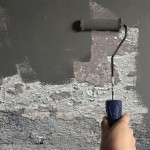Pump Water From Basement Floor Effectively
Flooded basements can be a nightmare for homeowners, causing damage to property, mold growth, and structural issues. The key to minimizing the impact of basement flooding is to remove the water as quickly and efficiently as possible. Here are some essential aspects of pumping water from a basement floor:
1. Safety First
Before attempting to pump water from your basement, it is crucial to ensure your safety. Wear appropriate protective gear, including gloves, rubber boots, and eye protection. If there is any electrical equipment in the basement, turn off the power at the main breaker panel. Never enter a flooded basement if the water level reaches electrical outlets or wires.
2. Choosing the Right Pump
The type of pump you need will depend on the depth of the water and the flow rate. For small floods with water depths of less than 2 inches, a portable sump pump may be sufficient. For larger floods, a more powerful submersible pump is recommended. Submersible pumps can handle larger volumes of water and can be used in deeper water.
3. Setting Up the Pump
Place the pump in the lowest point of the basement, where the water is the deepest. Connect the pump to a discharge hose and direct the water to a drain or outside the house. Make sure that the discharge hose is secure and will not become disconnected.
4. Pump Operation
Turn on the pump and monitor it regularly. If the pump becomes clogged, turn it off and clean the debris. Do not run the pump continuously for extended periods without monitoring. Most pumps will have an automatic float switch that turns the pump on and off as the water level rises and falls.
5. Removing Debris
As you pump water from the basement, debris such as dirt, leaves, and other materials may accumulate. Remove this debris regularly to prevent clogging the pump and ensure efficient operation.
6. Inspect for Damage
Once the water is removed, inspect the basement for any damage. Check for cracks in walls, ceilings, and floors. If you find any damage, contact a professional for repairs to prevent further issues.
7. Prevention is Key
The best way to deal with basement flooding is to prevent it from happening in the first place. Inspect your home regularly for potential water entry points and seal any gaps or cracks. Install a sump pump and backup battery system to ensure that water is removed automatically in the event of a flood. Consider installing a French drain around the foundation of your home to divert water away from the basement.

How Sump Pumps Help Keep Your Basement Dry Encompass

How To Remove Water From Your Basement Without A Sump Pump

Flooded Basement Cleanup Water Removal Sudbury Wayland Weston Concord Ma Nh Youtube

Here S Why Your Basement Flooded Even When You Have A Sump Pump Forbes Home

How To Stop Water From Coming Up Through The Basement Floor

Finding And Fixing Basement Leaks How To Waterproof Your

Sump Pump Reviews Comparing Systems

Pumping Water Out Of Your Basement After A Flood Pump Solutions Australasia

Do I Need A Sump Pit Pump Water In Basement

Top Methods For Basement Water Removal







